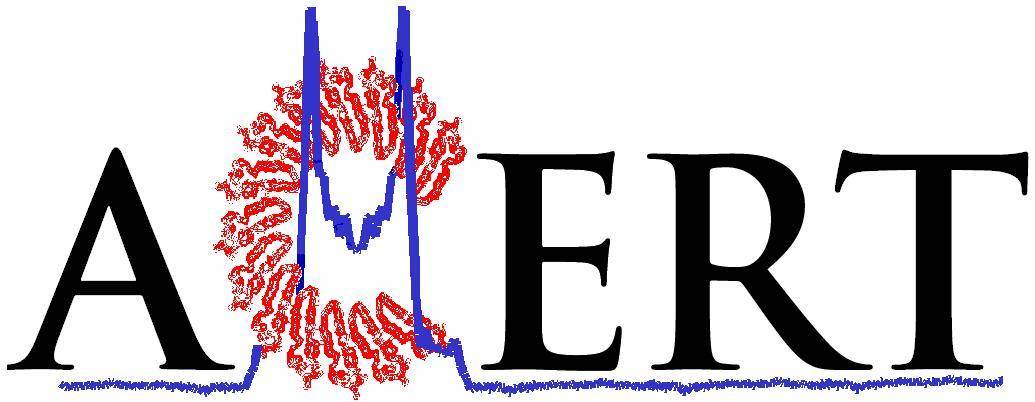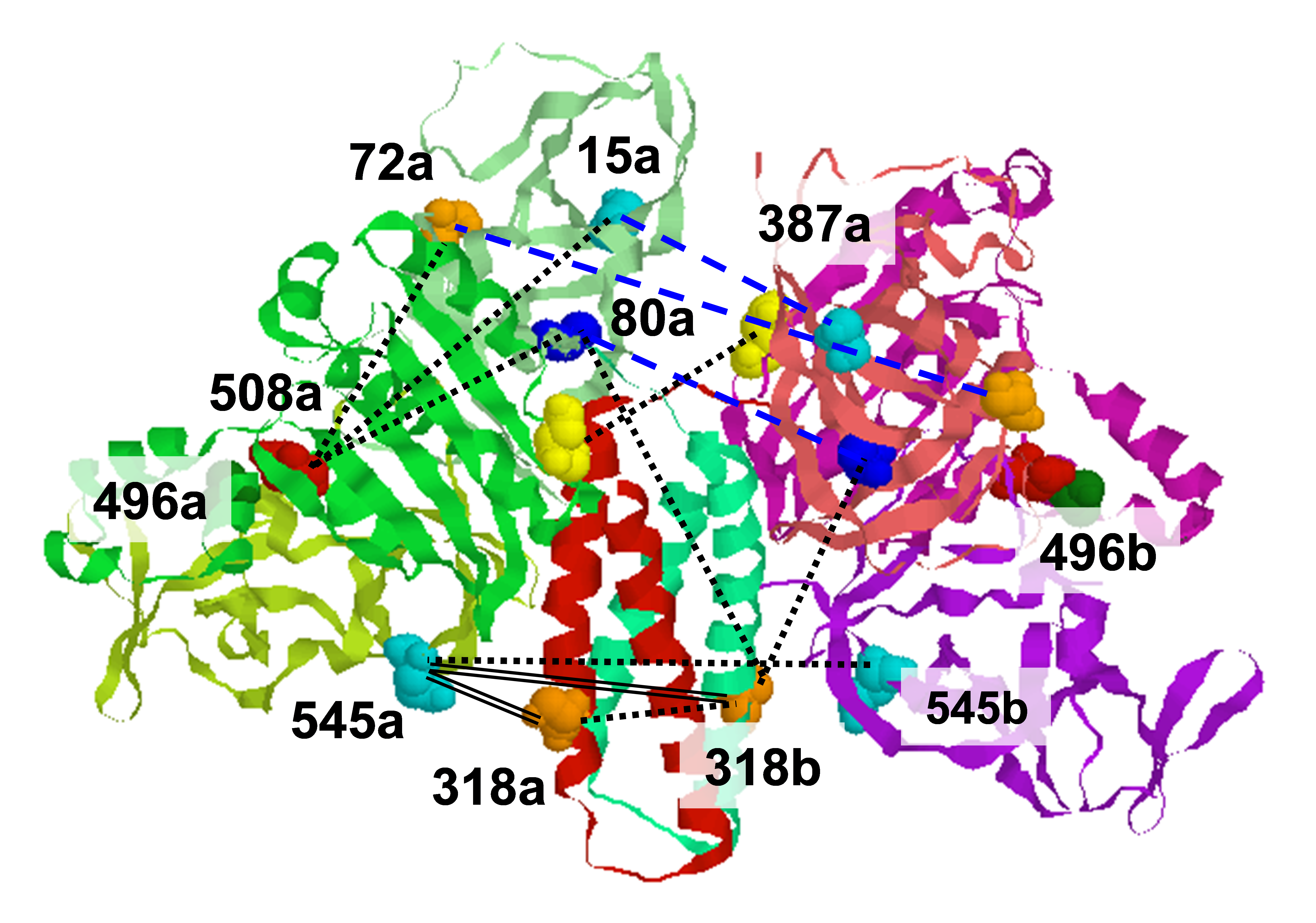.svg) National Institute of General Medical Sciences |
 |
 |
National Biomedical Resource for |
| ACERT's Service and Collaborative Projects | |
The large values of spin relaxation enhancement (RE) for phospholipid-choline (PC) spin-labels in the phospholipid membrane induced by paramagnetic metal salts dissolved in the aqueous phase can be explained by Heisenberg spin exchange due to conformational fluctuations of the nitroxide group as a result of membrane fluidity, flexibility of lipid chains, and, possibly, amphiphilic nature of the nitroxide label. Whether the magnetic interaction occurs predominantly via Heisenberg spin exchange (Ni) or by the dipole-dipole (Gd) mechanism, it is essential for the paramagnetic ion to get into close proximity to the nitroxide moiety for efficient RE. This conclusion highlights the importance of membrane fluidity and provides a new interpretation for the results of numerous previous studies that traditionally used PC labels for probing membrane properties at different immersion depths. In this study we also showed that for different salts of Ni the RE in phosphatidylcholine membranes follows the anionic Hofmeister series and reflects anion adsorption followed by anion-driven attraction of paramagnetic cations on the choline groups. We used Ni-induced RE to study the thermodynamics and electrostatics of ion/membrane interactions, and obtained good quantitative descriptions of our experimental results with the Poisson-Boltzmann-Graham equation. In fluid membranes with cholesterol, a significant difference is observed between PC labels whose nitroxide tethers are long enough to reach deep into the membrane hydrophobic core behind the area of fused cholesterol rings vs. those whose tethers are not long enough. This is consistent with our previous studies on frozen and gel phase membranes. Funding: P41GM105321, R01EB003150 (to JHF); Russ. Sci. Found. RNF 15-13-00163 (to VL). Publication: B. Dzikovski, V. Livshits, and J.H. Freed. J. Phys. Chem. B 119, 13330-13346 (2015) (PMC4762260). |
|
|
|
|
B. Dzikovski (Department of Chemistry and Chemical Biology, Cornell University, Ithaca, NY; ACERT and Centre of Photochemistry, Russian Academy of Sciences, ul. Novatorov 7a, 117427 Moscow, Russia) V. Livshits (Centre of Photochemistry, Russian Academy of Sciences, ul. Novatorov 7a, 117427 Moscow, Russia) and J.H. Freed (Department of Chemistry and Chemical Biology, Cornell University, Ithaca, NY; ACERT) |
|
|
|
About ACERT Contact Us |
Research |
Outreach |
ACERT is supported by grant 1R24GM146107 from the National Institute of General Medical Sciences (NIGMS), part of the National Institutes of Health. |
|||||
| ||||||||